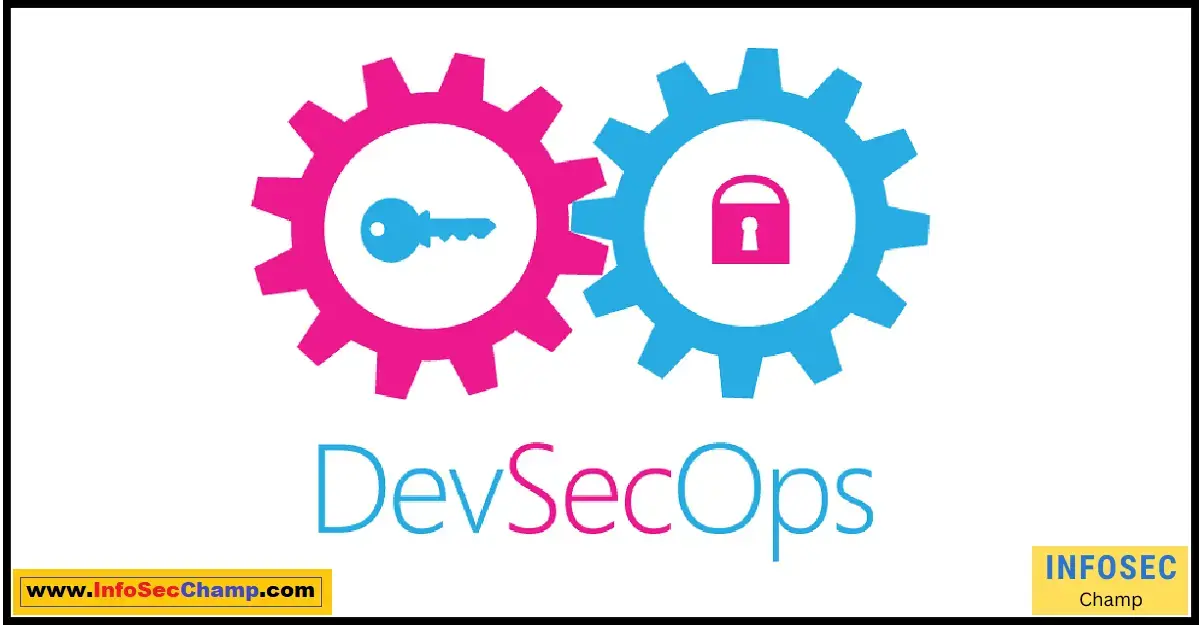Discover the Power of DevSecOps: Unleash Security and Agility in Your Software Development Process; In today’s rapidly evolving technology landscape, DevSecOps is becoming increasingly essential for organizations looking to stay ahead of the curve. By seamlessly integrating security into the DevOps pipeline, businesses can dramatically reduce the risk of data breaches and other cyber threats. With the rise of cloud computing, IoT devices, and artificial intelligence, there’s never been a more critical time to invest in a secure and agile software development process. In this insightful guide, we’ll explore the top DevSecOps tools, strategies, and best practices that are revolutionizing the way modern applications are built and deployed.
As you embark on your DevSecOps journey, you’ll uncover the secrets to achieving continuous security in your software development life cycle. Learn how to overcome the challenges of implementing DevSecOps and take your organization’s software development to the next level. Whether you’re a seasoned expert or just getting started, this comprehensive guide is packed with valuable insights, expert tips, and real-world case studies that will inspire you to take action and unlock the full potential of DevSecOps in your organization.
Why is DevSecOps So Crucial for Modern Software Development?
In an era where cyber threats are on the rise, implementing DevSecOps has become crucial for modern software development. DevSecOps, which stands for Development, Security, and Operations, is an approach that integrates security practices into the DevOps process.
Here are some key reasons why DevSecOps is essential:
- Reduced security risks: DevSecOps emphasizes a proactive approach to security, helping organizations identify and address vulnerabilities early in the development process. This reduces the likelihood of security breaches and data leaks.
- Faster time-to-market: By incorporating security measures into the software development life cycle (SDLC), teams can release new features and applications more quickly, without compromising on security.
- Compliance: Regulatory standards, such as GDPR and HIPAA, require organizations to safeguard sensitive data. DevSecOps helps ensure compliance by integrating security controls throughout the development process.
- Enhanced collaboration: DevSecOps fosters a collaborative environment, breaking down silos between development, security, and operations teams. This leads to improved communication, streamlined workflows, and better overall results.
- Cost savings: Fixing security issues late in the development process or after deployment can be costly. DevSecOps enables organizations to detect and address vulnerabilities early, potentially saving significant resources.
Top DevSecOps Tools and Technologies You Need to Know
To successfully implement DevSecOps, organizations need to leverage various tools and technologies that facilitate seamless security integration.
Here are some top DevSecOps tools you should consider:
- Static Application Security Testing (SAST): SAST tools, such as Checkmarx and Veracode, scan source code for potential vulnerabilities during the development phase. These tools help developers identify and fix security issues before deployment.
- Dynamic Application Security Testing (DAST): DAST tools, like OWASP ZAP and Burp Suite, assess applications for vulnerabilities during runtime. This allows security teams to identify potential weaknesses that may not be apparent during static analysis.
- Software Composition Analysis (SCA): Tools like Black Duck and WhiteSource analyze open-source components and third-party libraries for known security vulnerabilities, license compliance, and outdated versions.
- Container Security: As containerization becomes increasingly popular, tools like Aqua Security and Twistlock help secure containerized applications by scanning images for vulnerabilities and ensuring proper runtime configurations.
- Infrastructure as Code (IaC) Security: IaC tools like Terraform and CloudFormation enable organizations to automate infrastructure provisioning. Security-focused IaC tools, such as Checkov and Bridgecrew, help identify and remediate security misconfigurations in IaC templates.
- Security Orchestration, Automation, and Response (SOAR): SOAR platforms like Splunk Phantom and Palo Alto Networks Cortex XSOAR enable organizations to automate and streamline security incident response processes.
- Secrets Management: Tools like HashiCorp Vault and AWS Secrets Manager help securely store, manage, and rotate secrets, such as API keys and credentials, used by applications and infrastructure.
By selecting the right combination of tools and technologies, organizations can effectively integrate security practices into their DevOps pipeline and ensure a secure software development process.
DevSecOps Best Practices: A Step-by-Step Guide
Successfully implementing DevSecOps requires a combination of cultural shifts, process changes, and the right tools.
Here’s a step-by-step guide to help you adopt DevSecOps best practices:
- Develop a security-first mindset: Encourage a culture where security is a shared responsibility among all team members, including developers, security professionals, and operations staff.
- Shift security left: Integrate security practices early in the SDLC, enabling developers to catch and fix vulnerabilities during the development phase rather than after deployment.
- Automate security processes: Leverage tools like SAST, DAST, and SCA to automate security testing and vulnerability scanning, making it an integral part of the CI/CD pipeline.
- Establish a secure development lifecycle: Incorporate security practices into each stage of the SDLC, from planning and design to development, testing, and deployment.
- Continuous monitoring and feedback: Implement continuous monitoring solutions to identify and address potential security issues in real-time. Encourage feedback loops among teams to improve security practices and processes.
- Emphasize training and education: Provide ongoing training and resources for team members to stay up-to-date on the latest security threats, trends, and best practices.
Implement access control and secrets management: Limit access to sensitive information and systems using the principle of least privilege. Use secrets management tools to securely store and manage sensitive data, such as credentials and API keys.
Automating Security in DevOps: Essential Techniques
Automation is a key component of DevSecOps, as it allows for more efficient and consistent security practices.
Here are some essential techniques for automating security in DevOps:
- Automated code analysis: Implement SAST and DAST tools to automatically analyze code for vulnerabilities and potential security issues during development and runtime.
- Dependency management: Use SCA tools to automatically identify and manage vulnerable or outdated dependencies in your codebase.
- Automated infrastructure provisioning: Leverage IaC tools to automate infrastructure provisioning and ensure secure and consistent configurations across environments.
- Security testing in CI/CD pipelines: Integrate security testing and vulnerability scanning into your CI/CD pipeline, allowing for continuous feedback and remediation.
- Automated security monitoring: Implement continuous monitoring solutions to automatically detect and respond to security events in real-time.
- Incident response automation: Use SOAR platforms to automate incident response processes, ensuring faster and more efficient remediation of security events.
By automating these security processes, organizations can greatly enhance the effectiveness of their DevSecOps initiatives and reduce the risk of security breaches.

Overcoming Common DevSecOps Challenges and Roadblocks
While adopting DevSecOps can bring significant benefits, organizations often face challenges and roadblocks during implementation.
Here are some common obstacles and how to overcome them:
- Cultural resistance: Encourage a security-first mindset and promote a culture of shared responsibility for security among all team members. Offer training and resources to help bridge gaps in knowledge and skills.
- Limited resources: Start small and focus on high-impact security practices, such as automating vulnerability scanning and implementing secure coding practices. Gradually expand your DevSecOps initiatives as resources allow.
- Complex environments: Prioritize visibility and transparency across your organization’s technology stack, and choose tools that integrate well with existing systems.
- Lack of expertise: Invest in ongoing training and education for team members to stay current on the latest security threats and best practices. Consider partnering with external experts or leveraging managed services to supplement internal capabilities.
- Legacy systems: Assess the security posture of legacy systems and prioritize modernization efforts based on risk levels. Implement security controls and monitoring for existing systems while working towards modernization.
- Measurement and reporting: Establish clear metrics and key performance indicators (KPIs) to track the progress and success of your DevSecOps initiatives. Regularly review and adjust your strategies based on these metrics.
Tips for Cultivating a Successful DevSecOps Culture
A successful DevSecOps culture is essential for the effective integration of security practices into the DevOps pipeline.
Here are some tips to help foster a strong DevSecOps culture within your organization:
- Leadership support: Ensure that leadership is committed to the DevSecOps vision and provides the necessary resources and support to drive its adoption.
- Collaboration and communication: Break down silos and encourage open communication and collaboration between development, security, and operations teams.
- Continuous learning: Foster a culture of continuous learning and improvement, where team members are encouraged to learn from mistakes and share their knowledge.
- Shared responsibility: Emphasize that security is the responsibility of everyone involved in the software development process, not just the security team.
- Empowerment: Provide teams with the tools, resources, and autonomy they need to effectively integrate security practices into their workflows.
Real-World DevSecOps Case Studies and Success Stories
The implementation of DevSecOps can bring significant benefits to organizations across various industries.
Here are some real-world success stories:
- Large financial institution: A major bank improved its security posture and reduced its vulnerability exposure by implementing DevSecOps practices. The organization integrated security tools into its CI/CD pipeline, allowing for continuous vulnerability scanning and remediation.
- Healthcare provider: A healthcare provider adopted DevSecOps to improve the security of its patient data and comply with regulatory requirements. The organization incorporated security controls throughout its SDLC, including automated security testing and continuous monitoring.
- E-commerce company: An e-commerce company leveraged DevSecOps to enhance the security and scalability of its platform. By automating security processes and implementing container security best practices, the organization achieved a more secure and agile infrastructure.
- Government agency: A government agency adopted DevSecOps to modernize its legacy systems and improve security across its technology stack. The agency used IaC tools to automate infrastructure provisioning and ensure secure configurations.
Future Trends and Innovations in DevSecOps
As organizations continue to adopt DevSecOps, several trends, and innovations are expected to shape the future of this approach:
- AI and Machine Learning: Artificial intelligence and machine learning technologies will play an increasingly significant role in automating security tasks and identifying vulnerabilities in complex environments.
- Zero Trust Architecture: The adoption of zero trust architecture principles will further enhance the security of applications and infrastructure in the DevSecOps context.
- Serverless and Edge Computing: As serverless and edge computing technologies gain traction, new security challenges will arise, driving the need for innovative DevSecOps solutions tailored to these environments.
- Cloud-Native Security: As organizations increasingly adopt cloud-native technologies, DevSecOps practices will evolve to focus on securing containerized applications, microservices, and cloud-based infrastructure.
- Threat Intelligence Integration: The integration of threat intelligence data into DevSecOps processes will help organizations better understand and respond to emerging security threats.
By staying ahead of these trends and continuously refining their DevSecOps practices, organizations can ensure a secure and agile software development process in the face of evolving cyber threats.
Conclusion: Accelerate Your Cybersecurity DevOps Journey Today
In an ever-evolving digital landscape, the need for effective cybersecurity DevOps practices is more urgent than ever. By adopting DevSecOps, organizations can successfully integrate security into the software development life cycle, reducing security risks, ensuring compliance, and accelerating time-to-market. Don’t let your organization fall behind in the race to stay secure and agile in today’s competitive environment. Begin your cybersecurity DevOps journey now and unlock the full potential of DevSecOps in your organization.

FAQ
Q: What is the main benefit of implementing DevSecOps in an organization?
A: The main benefit of implementing DevSecOps is the seamless integration of security practices into the DevOps pipeline, which reduces security risks, ensures compliance, and accelerates time-to-market for software applications.
Q: What are some essential techniques for automating security in DevOps?
A: Essential techniques for automating security in DevOps include automated code analysis, dependency management, automated infrastructure provisioning, security testing in CI/CD pipelines, automated security monitoring, and incident response automation.
Q: What are some common challenges organizations face when implementing DevSecOps?
A: Common challenges include cultural resistance, limited resources, complex environments, lack of expertise, and dealing with legacy systems.
Q: What is the difference between DevOps and DevSecOps?
A: The main difference between DevOps and DevSecOps is the focus on security. While both approaches aim to improve collaboration and streamline software development processes, DevSecOps places a greater emphasis on integrating security practices throughout the development life cycle.
Q: How does DevSecOps help in reducing security risks?
A: DevSecOps reduces security risks by integrating security practices early in the software development life cycle, enabling developers to catch and fix vulnerabilities during the development phase rather than after deployment. This proactive approach to security minimizes the likelihood of security breaches and data leaks.
Q: What are some examples of DevSecOps tools?
A: Examples of DevSecOps tools include Static Application Security Testing (SAST) tools like Checkmarx and Veracode, Dynamic Application Security Testing (DAST) tools like OWASP ZAP and Burp Suite, Software Composition Analysis (SCA) tools like Black Duck and WhiteSource, container security tools like Aqua Security and Twistlock, and Infrastructure as Code (IaC) security tools like Checkov and Bridge crew.

